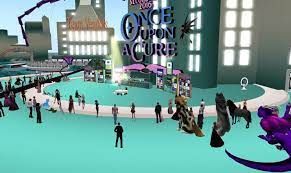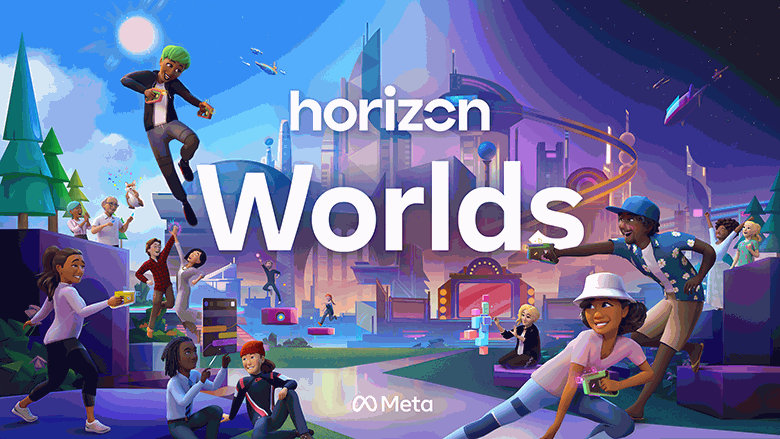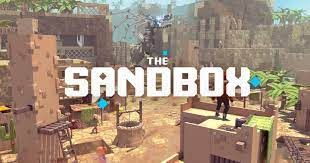How can Zuckerberg be so ugly? Why are images of the metaverse so bad?
The article is excerpted from Decrypt

It's been 20 years since the Second Life game was released, and this is Linden Labs' early experiment with immersive multiplayer games. People can live and work in it and earn cash. Twenty years later, Second Life hints for the first time that its game concept is closer to reality due to the boom in metaverse technology.

If Mark Zuckerberg gets his way, a billion of us will be in virtual worlds by the end of the century. The industry will underpin an economy of between $800 million and $1.3 billion , according to Citibank. On the same day, McKinsey noted that the industry has attracted $ 177 billion in investment since 2021.
The question now is: why are the images in these cutting-edge metaverse platforms of the future similar to, if not worse than, Second Life 20 years ago?
This week, Meta received endless mockery when it announced the launch of its metaverse platform Horizon Worlds in France and Spain. Especially Zuckerberg's "dead eye" and legless cartoon imagery, the mockery forced its redesign. Not only Meta, but Decentraland has also been criticized for its graphic design. All of the above point to the same question: why are these images in the virtual world so bad?

There are many reasons why this happens, and different platforms will interpret it differently depending on its situation.
One of the main problems facing virtual worlds today is that real-time rendering of graphics requires powerful processing power , and not all users have strong network speeds. Line cards and broadband connections limit the ability of virtual worlds to render high-quality graphics, which also means these platforms rely on rougher graphics.
Graphics in virtual worlds are usually worse than in MMO games because they are more open and free in design. The virtual world does not allow users to simply follow the program commands or the game plot, but hopes to maintain a high degree of freedom, and a high degree of freedom means that image rendering and calculations need to be performed all the time.

And when it comes to "legs," the problem is even more vexing.
Andrew Bosworth, then vice president of Reality Labs and current chief technology officer at Meta, pointed out in an interview with CNN that it is "super difficult" to restore reality-based legs in a virtual world, especially only through so-called VR headsets.
Gijs Den Butter of Dutch company SenseGlove said it was a hardware issue. The company has developed haptic feedback gloves and devices that will become a staple of virtual worlds. The helmet is designed so that there is no way to track leg movements, but it can see your hand or arm and track it at the same time. And when you look forward, you can't track the movement of the legs.
This is quite difficult because the representation of leg movements is only tracked if you can both look forward and see your own legs, but it's almost impossible to do it at the same time.
This isn't a problem for virtual worlds like Decentraland and The Sandbox, as they're based on a browser and desktop for the time being rather than an immersive VR. Weronika Marciniak of Future Is Meta in Hong Kong said, "Most virtual worlds, such as VRChat, Decentraland, Sandbox, etc., solve problems through 'camouflage'."

Den Butter said, "The lack of legs in mainstream virtual world platforms is not due to lack of computing power. Like all moving parts, the motion of the leg is basically constructed by the kinematic model. Compared with the model of the hand, the model of the leg is Relatively simple.” He says “Low-end hardware like Azure Connect or Wii can process the relevant data points—meaning that there isn’t much data latency in transferring and processing data in the virtual world. Instead, he Like Marciniak, he blames the problem on the helmet's existing viewing angle and lack of equipment .
However, this situation may be improved. In December 2021, NIKE acquired RTFKT, which Marciniak believes may be the first step for NIKE to connect foot devices to head devices. "They could be working on real-life shoes or socks with sensors that would be hooked into a VR headset," he said.

The otherside metaverse, created by Yuga Labs, is powered by Improbable's M2 engine. Improbable co-founder and COO Rob Whitehead said its M2 engine took hours of research and development to enable its computer to learn to render tens of thousands of unique characters, pushing the processed data to the user's GPU instead of It is sent through the cloud. The problem is that if the number of users doubles, the amount of data quadruples.

Whether other metaverse platforms will follow in a similar fashion is another question, but if virtual worlds need to go mainstream, the question of metaverse images is bound to become an increasingly pressing one.
be careful
The metaverse is still at a very early stage, and people's exploration and discussion of virtual worlds are still in a very early stage. Most people's imagination of the metaverse is nothing more than a movie, where they can "immerse" experience the life of another "parallel universe" through a head-mounted helmet.
Nonetheless, it seems to me that the metaverse is not alone in this aspect, it can also be a "parallel universe" related to our present world. Including the concept of the so-called "soul binding" proposed by V God a few months ago, through the binding of the soul, we can travel in the real world and the online world, and at the same time build on trust and consensus. In other words, even if we cannot physically "experience" a virtual world, we can enter the metaverse through real experience.
But at the same time, it has to be denied that the virtual world of VR has a great influence on the future, and people are often very interested in breaking out of the existing world. But in addition to the technical problems that must be solved, the connection and application of reality and virtuality also seems to need to be considered. Coupled with the recent fierce collision between the currency circle and government regulators, it seems that legal issues in the virtual world also need to be considered in advance. Imagining issues such as bullying or theft in the virtual world seems to be a thorny problem.
All in all, I also want to hack and slash in the virtual world like Sword Art Online!
Relentless Business PART1:
In the construction of the Bar Learning Community, welcome to create a friendly and decentralized learning community together! Join us to supervise each other and learn from each other!
Tonight at 9 o'clock, Taiwanese classroom ep8 ─ Varied reading of text and white <br class="smart">Reading Bar will hold the eighth episode of Taiwanese classroom! Compared with Chinese, southern languages such as Fujian, Cantonese, and Wu have retained the system of bilingual reading to a greater extent . The text description is more diverse and interesting. However, there are many words in Taiwanese, which use different pronunciations and express different meanings. Different readings of text and white are integrated into our daily vocabulary. This Taiwanese small classroom will take you to analyze the different readings of text and white in Taiwanese. After understanding the different readings of Wenbai and Bai, we will further analyze the phenomenon of the same word with different pronunciations in Taiwan's place names. The reason hides the context of social development and local stories.... In addition, in the sharing session at the end of the course, you can prepare one to three special place names to share their origins and stories with online partners , and look forward to meeting you in the air tonight!

At 9:30 on Monday evening, we will read the book "Gender Ties: Demolition of Patriarchal Illegal Buildings" . Those who haven't read the book are fine. Interested friends, welcome to join our DC group to discuss!
Ruthless business PART2:
New DemiHuman project: DemiHolim casting!
Like my work? Don't forget to support and clap, let me know that you are with me on the road of creation. Keep this enthusiasm together!




- Author
- More